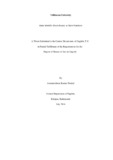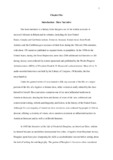Please use this identifier to cite or link to this item:
https://elibrary.tucl.edu.np/handle/123456789/3294Full metadata record
| DC Field | Value | Language |
|---|---|---|
| dc.contributor.author | Dhakal, Awatareshwar Kumar | |
| dc.date.accessioned | 2018-11-27T06:07:41Z | |
| dc.date.accessioned | 2021-07-23T04:34:48Z | - |
| dc.date.available | 2018-11-27T06:07:41Z | |
| dc.date.available | 2021-07-23T04:34:48Z | - |
| dc.date.issued | 2014 | |
| dc.identifier.uri | http://elibrary.tucl.edu.np/handle/123456789/3294 | - |
| dc.description.abstract | Black Beauty (1877) is an autobiography from the point of view of an ostensible horse. Though Anna Sewell herself said that her work was for improving the treatment of horses, the novel has many similarities to the slave narratives. The living conditions and standards of the characters of Black Beauty are similar to that of the slaves. The relationship between animal autobiography and the slave narrative has only recently been recognized. Critics like Moria Ferguson and Tess Cosslett have sketched several commonalities between the animal autobiography and the slave narrative. This research investigates that relationship further. In short, this research confirms Black Beauty's rhetorical, formal, thematic, and social power within the genre of the American slave narrative. | en_US |
| dc.language.iso | en | en_US |
| dc.subject | autobiography | en_US |
| dc.subject | novel | en_US |
| dc.subject | slave | en_US |
| dc.subject | rhetorical | en_US |
| dc.title | Anna Sewell’s Black Beauty as Slave Narrative | en_US |
| dc.type | Thesis | en_US |
| Appears in Collections: | English | |
Files in This Item:
| File | Description | Size | Format | |
|---|---|---|---|---|
| Cover.pdf | 160.87 kB | Adobe PDF |  View/Open | |
| body part.pdf | 333.86 kB | Adobe PDF |  View/Open |
Items in DSpace are protected by copyright, with all rights reserved, unless otherwise indicated.
